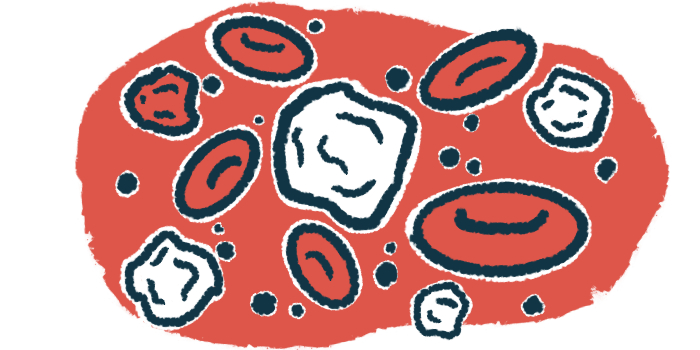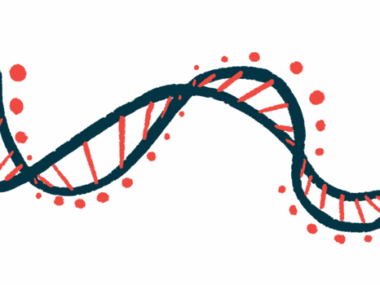Certain immune cell types found dysregulated in primary Sjögren’s
Alterations may be drivers, influence severity of autoimmune disease: Study
Written by |

Certain immune cell types are dysregulated in people with primary Sjögren’s disease, according to a new study from researchers in China that points to the resulting alterations as possible drivers of the condition and factors influencing its severity.
“Our study demonstrates significant alterations in circulating immune cell populations in patients with [primary Sjögren’s], linking these changes to clinical disease activity,” the researchers wrote.
The team further highlighted three specific immune cell types with potential as biomarkers of the disease, and possibly as targets for future therapies.
“These findings may provide mechanistic insights into … pathogenesis [disease development] and establish a foundation for developing … targeted therapeutic strategies,” the scientists wrote.
Their study, “Immunophenotypic Profiling Reveals Circulating Lymphocyte Dysregulation in Primary Sjögren’s Syndrome,” was published in the International Journal of Rheumatic Diseases.
An autoimmune condition, Sjögren’s is caused by the immune system mistakenly targeting the body’s own cells, causing an inflammatory response. This typically occurs in tear and salivary glands, leading to dry eyes and dry mouth — the most common symptoms of Sjögren’s.
When the condition occurs without another underlying autoimmune disease, it is classified as primary Sjögren’s.
Several types of immune cells may contribute to Sjögren’s. Broadly, these include B cells, which produce antibodies, and T cells, which help coordinate the immune response and can kill infected or abnormal cells. Both are types of lymphocytes, a subset of white blood cells.
Scientists looked for changes, patterns in immune cell types
While some immune changes occur in specific tissues, dysregulation also affects lymphocytes circulating throughout the body. However, “the relationship between peripheral immune cell alterations and clinical outcomes is not fully understood,” the team noted.
To clarify this relationship, the scientists assessed levels of several of T- and B-cell subtypes in blood samples from 43 people with primary Sjögren’s. Participants in this group had an average age of 43.5 and about 95% were female. A group of 46 participants without chronic inflammatory disorders, but with similar age and sex characteristics, served as controls.
Overall, B-cell levels were significantly higher in the Sjögren’s patients than in controls, with elevated levels of one particular subtype, CD21-/low B-cells. This subtype is also present at high levels in other chronic immune conditions.
The researchers noted that higher levels of CD21-/low B-cells correlated with greater disease severity in this Sjögren’s population. Other subtypes of B-cells, on the other hand, were lower in the Sjögren’s patients than in the controls.
“Our findings demonstrate profound alterations in peripheral lymphocyte subsets in patients with [primary Sjögren’s], revealing distinct immune dysregulation patterns within T and B cell populations,” the researchers wrote. Alterations included significantly higher levels of certain immune cell subtypes and significantly lower levels of others. For some subtypes, levels correlated with disease severity as measured using the EULAR Sjögren’s Syndrome Disease Activity Index (ESSAI).
Altered levels of T-cell subtypes seen in Sjögren’s patients
Although overall levels of certain T cells, like T-helper (Th) and T-follicular helper (Tfh) cells, were similar between groups, patients with Sjögren’s showed altered levels of several T-cell subtypes.
Importantly, according to the researchers, Th2 and Th17 cells — types of helper T cells that coordinate immune responses — were significantly increased. These elevated Th2 and Th17 levels are consistent with their known roles in driving B cell hyperactivity and glandular inflammation, highlighting their contribution to early disease development, the team noted.
Additionally, total cytotoxic T (Tc) cells, which target and kill damaged or infected cells, were significantly higher in the Sjögren’s group, and also correlated with more severe disease as measured by ESSAI scores, the data showed. The team also reported that the Tc1 and Tc17 subtypes were significantly decreased in patients compared with controls, and noted that higher Tc1 levels were associated with milder disease severity.
The identification of [these cell types] as potential mediators of disease activity, … highlights actionable pathways for further exploration.
These findings may provide insight into the processes that cause primary Sjögren’s, according to the researchers.
“The identification of CD21−/low B cells as potential mediators of disease activity, alongside Th17 or Tc cell imbalances, highlights actionable pathways for further exploration,” the team wrote. These three cell types may provide biological markers of disease state and potential therapeutic targets, they noted.
However, while the scientists say their findings “provide a foundation for understanding T and B cell dysfunction” in primary Sjögren’s, they add that “future multicenter studies with larger cohorts are warranted to validate these observations and explore their therapeutic implications.”
The team noted several limitations to the study, specifically that this disease population tended to have milder forms of Sjögren’s. People with more severe versions of the disease may show different patterns in immune dysregulation, the team cautioned. This could indicate different immune processes at play depending on disease severity.






